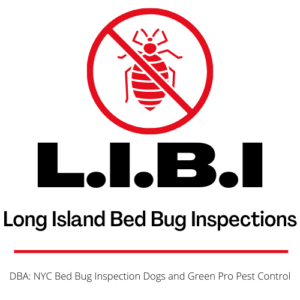No parent wants to discover that they and their children are sharing their home with a hungry colony of bed bugs. Unfortunately, bed bug infestations are becoming increasingly common, and families all over the country are waking up to find that their homes have become host to an invading force of these blood sucking little parasites.
It’s bad enough that you invasion on your hands and you have to scramble to call in a professional removal service to effectively eliminate the hordes of creepy crawlies. You also have to endure the creatures’ biting and blood sucking. For an adult that can be irritating and even a bit embarrassing. But consider what it must be like for a small child.
When toddlers are attacked by bed bugs all they can do is endure the pain and discomfort and wonder what is happening and when it’s going to stop. It’s up to parents to make sense of the situation, and try to calm their children’s fears and soothe their bites and rashes. Of course, to do that you need to know how to spot the signs of a bed bug attack and how to treat the problem when your child becomes the target of a hungry family of bed bugs.
How to Recognize the Tell Tale Signs of a Bed Bug Attack
Bed bug bites on young children will look much the same as they do on an adult. In general, the bites will manifest as a series of raised red welts on the skin. The bites tend to appear in small clusters, typically in a zigzag pattern. The only significant difference between bed bug bites on children and adults is the redness of the affected area. Because young children generally have softer skin there is a tendency for the bites or rash area to appear a touch more florid. In the case of toddlers and very small children the welts may have a more livid redness about them when compared with an adult victim.
Another sure sign of a bed bug attack is where the bites appear on the body. For instance, fleabites tend to appear around the feet and ankles, but bed bug bites are rarely so strictly located. As a general rule bed bug bites will appear on the arms or torso, or anywhere the skin is exposed in a sleeping adult or child. If you are seeing welts or rashes on these areas of your child’s body there is a good chance they have been in contact with bed bugs.
It’s worth noting that bed bug bites do not necessarily appear immediately following an attack. Typically, it can take 3 to 4 days for the signs of a bed bug bite to appear. So, if you are starting to notice bites on your children it is likely that they have been exposed to bed bugs for some little time. It is possible they are being bitten on a fairly regular basis and only now are the signs beginning to show.
Visually Confirm the Presence of Bed Bugs
If you suspect your child is being bitten by bed bugs you should take some time to thoroughly inspect your home for signs of bed bug activity. This is the only sure way to confirm that bed bugs are the cause of your child’s bites and/or rash. Keep in mind you will want to inspect the entirety of your home. If there are bed bugs in your child’s nursery or bedroom they have almost certainly spread throughout the house.
Check for key indicators for the presence of bed bugs such as brown fecal stains on mattresses and linen, as well as small blood stains on sheets and pajamas. You should also keep an eye out for any stray husks or exoskeletons from dead or molting insects. If the infestation is severe you may also notice a distinct musty smell in the room.
Treating Your Child’s Bed Bug Bites
Bed bug bites tend to irritate the skin. While some people are immune to the bite, most experience some degree of itching in the affected areas. The bites themselves do not carry any disease or toxin, but scratching at the bite-rash can sometimes lead to open wounds and a subsequent infection. This is something parents need to be aware of, because young children are fairly likely to absentmindedly scratch at an irritating itch.
At the first signs of bed bug bites on your child you should wash the affected areas with cool soapy water. This should help to alleviate the itch while keeping the area clean. If the itching persists a cool compress can help to further dull the irritation, and you can follow that up with an application of calamine lotion for long-term relief. In extreme circumstances, where the itch cannot be dulled and the child cannot be soothed it may be sensible to consult your family physician.
Finally, Address the Heart of the Problem
Children rely on their parent to keep them safe and healthy, and while bed bug bites are relatively benign they should never be ignore. If your child is being bitten by bed bugs it’s a sign of a larger problem that will only get worse if you do not tackle it head on.
If you are starting to notice bed bug bites on you or your children the first step is to contact a bed bug inspection and removal specialist. They will help to pinpoint the heart of your bed bug infestation and then take the necessary steps to eliminate the infestation. Left untreated a bed bug infestation is only going to get worse, so ignoring the problem is not an option. Remember, your children depend on you to care for them and keep them safe. Bed bugs may not be the first thing you think of when it comes to protecting your child from harm, but when they strike it is up to you to know how to handle the situation.
Published by Scott Palatnik
If you believe you’ve brought bed bugs into your home or office, give us a call, we can help!
Now with 2 locations. On Long Island @ 516-619-6149, or in NYC @ 212-299-9186
We are Long Island Bedbug Inspections.
Your Bedbug Inspection, and Elimination solution.


